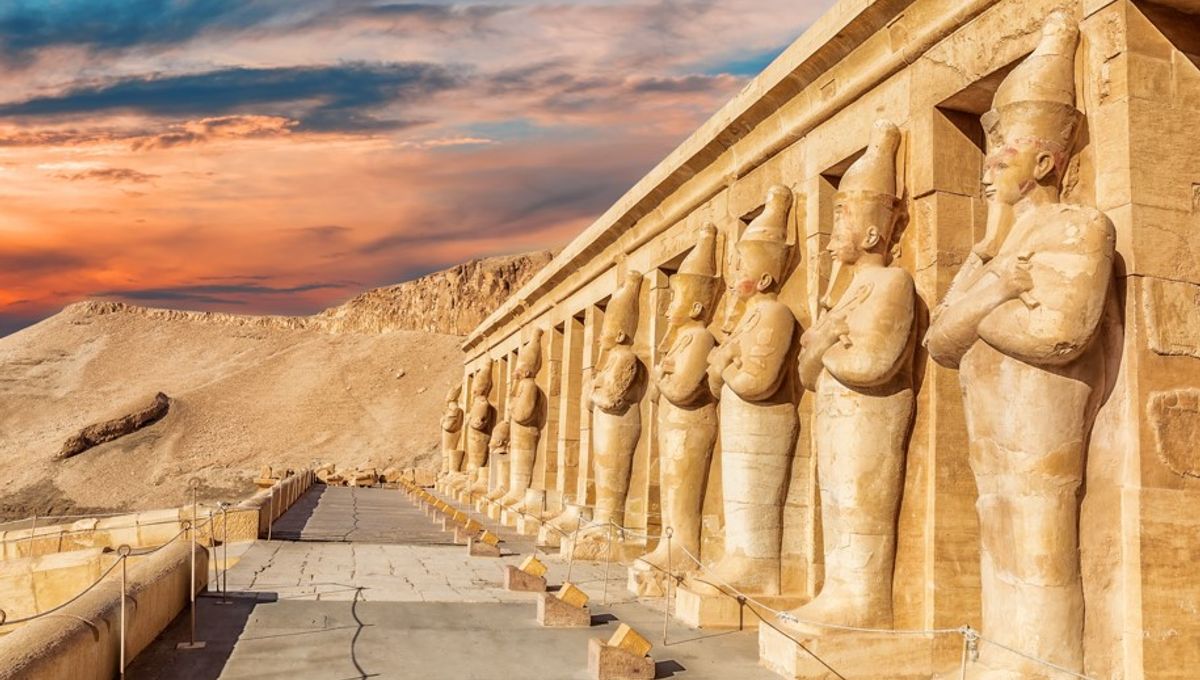
The tomb of King Thutmose II has finally been discovered in Egypt, more than a hundred years after the Pharaoh’s mummified body was found elsewhere. The last of the lost tombs belonging to the kings of the 18th Dynasty, Thutmose II’s burial site is also the first royal tomb to be found in Egypt since Howard Carter unearthed Tutankhamun in 1922.
ADVERTISEMENT GO AD FREE
Ruling from roughly 1550 BCE to 1292 BCE, ancient Egypt’s 18th Dynasty was marked by military success, imperial expansion, and the construction of glorious monuments. Among the most celebrated pharaohs from the period are Thutmose I and Thutmose III, both of whom were renowned warrior kings.
Sandwiched between these two great leaders was the relatively obscure Thutmose II, who is thought to have reigned for just five years before his death at the age of 30-ish in 1479 BCE. Little is known about his royal achievements, although his tomb-less body was found in the 19th century at the mortuary temple of Deir el-Bahari.
It’s thought that the King’s mummy was moved to the site after being removed from its original resting place by grave robbers, leaving archaeologists with few clues as to the location of the tomb – until now.
In a statement announcing the discovery, the Egyptian Ministry of Tourism and Antiquities explained that Thutmose II’s tomb was found in the Mount of Thebes area, a few kilometers west of Luxor and the Valley of the Kings. The entrance to the tomb was actually located three years ago, yet archaeologists originally thought that it belonged to a royal wife, as it was so close to the burial sites of some of Thutmose III’s spouses.
ADVERTISEMENT GO AD FREE
However, after unearthing alabaster vessels bearing inscriptions with Thutmose II’s name on them – along with the label of “deceased king” – researchers realized that a relic previously known as tomb C4 was in fact the Pharaoh’s eternal container. Unfortunately, the tomb was extensively damaged by an ancient flood and many of the grave goods appear to have been removed at the time of the deluge, yet sections of the funerary book of Imydwat were identified on pieces of mortar within the tomb.
Recounting the journey of the sun god Ra through the 12 levels of the underworld, this text is found in most of the royal tombs in the Valley of the Kings, and was intended to assist the expired pharaohs in the afterlife.
In his living days, Thutmose II did make one significant contribution to ancient Egyptian history by marrying his half-sister Hatshepsut. This union enabled her to become the greatest female pharaoh of all time after her husband’s death, only for her name to be erased from the records by her stepson Thutmose III, who she kept from the throne for several decades.
Dr Mohamed Ismail Khaled, Secretary-General of Egypt’s Supreme Council of Antiquities, explained that Hatshepsut’s name was also found on Thutmose II’s tomb, and suggests that she may even have performed his burial rites.
ADVERTISEMENT GO AD FREE
The mummy of Thutmose II is currently housed in the National Museum of Egyptian Civilization, while Hatshepsut was buried in the Valley of the Kings.
Source Link: First Royal Tomb Since Tutankhamun’s Discovered In Egypt – And It Belongs To Thutmose II